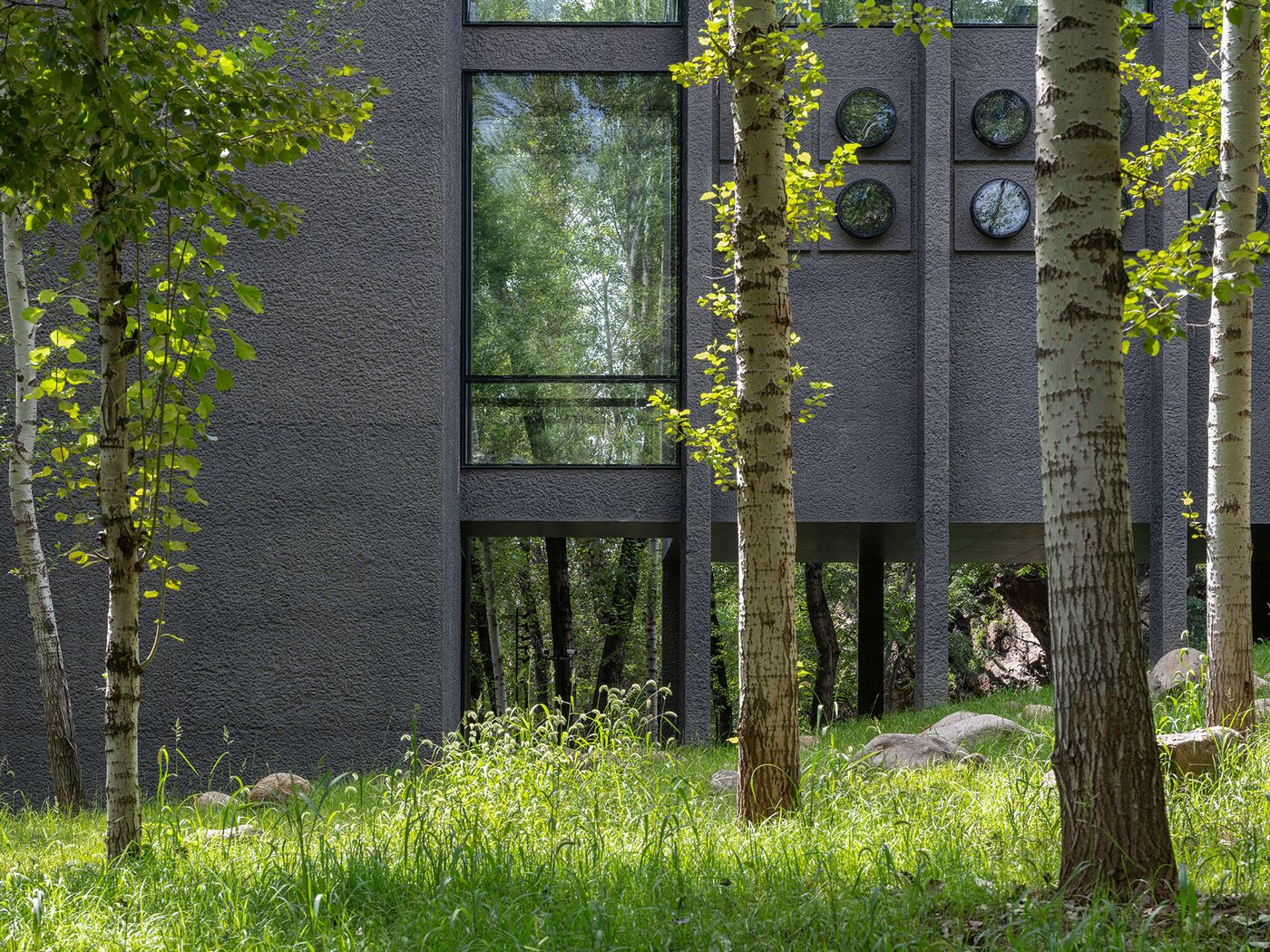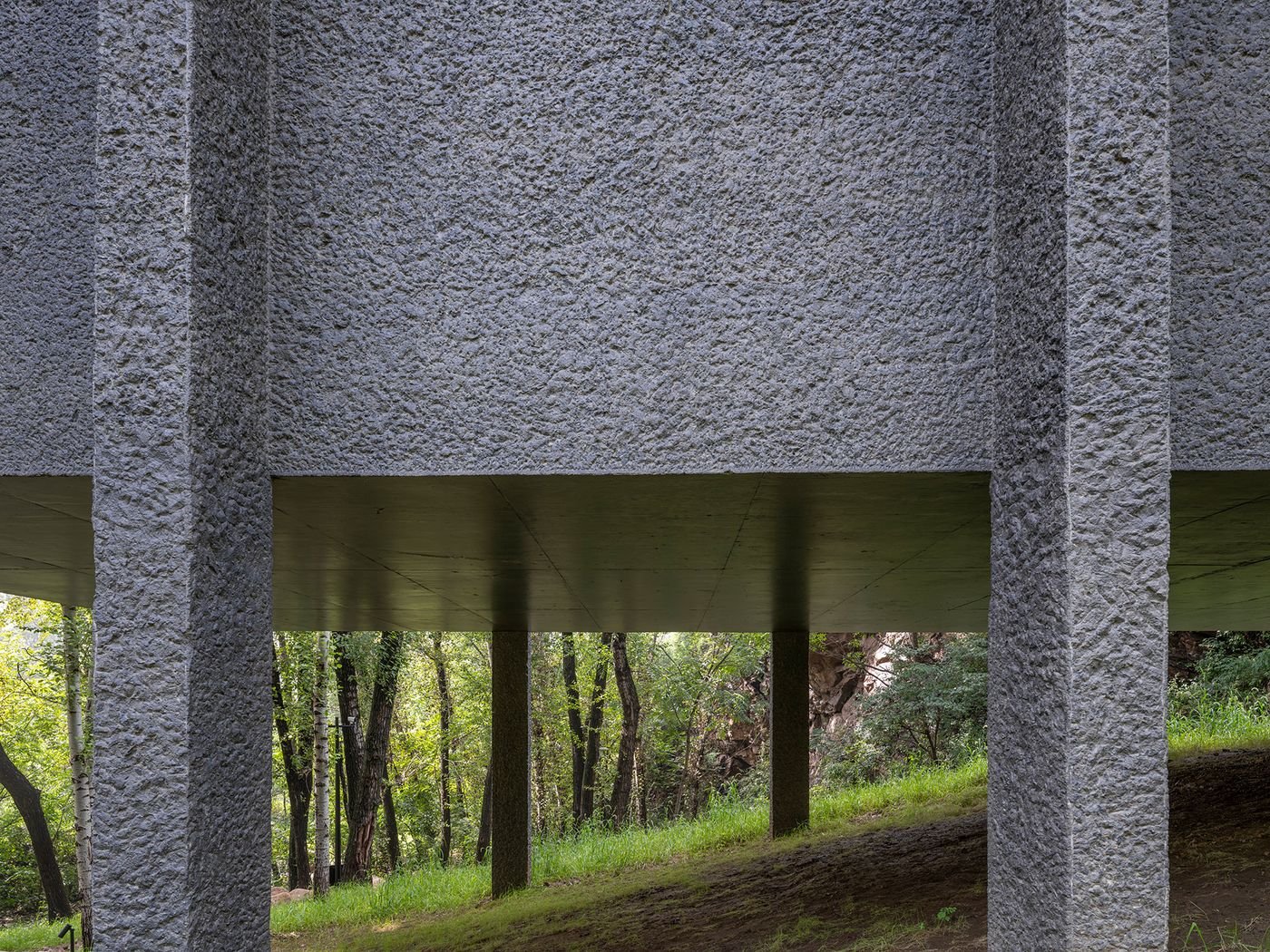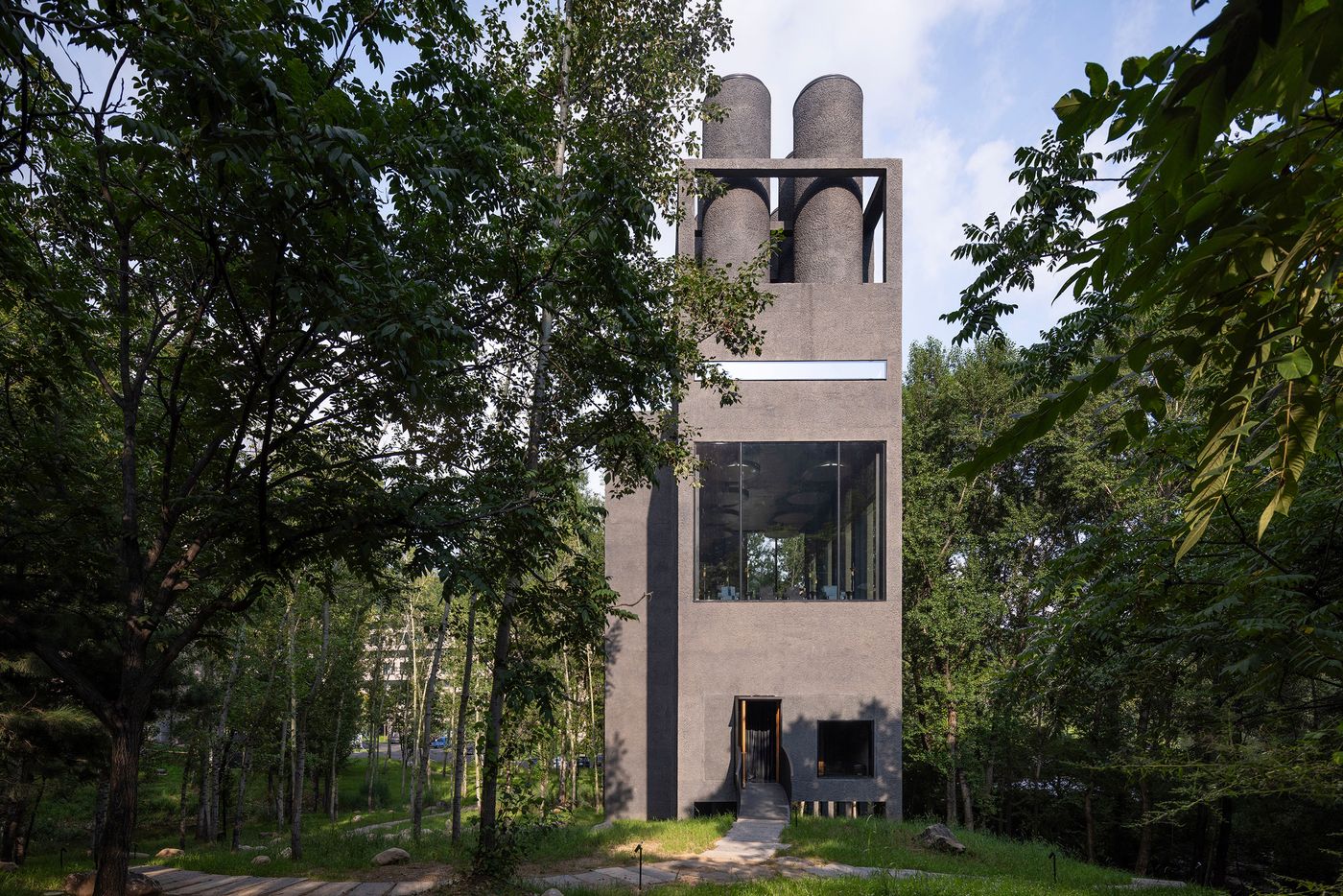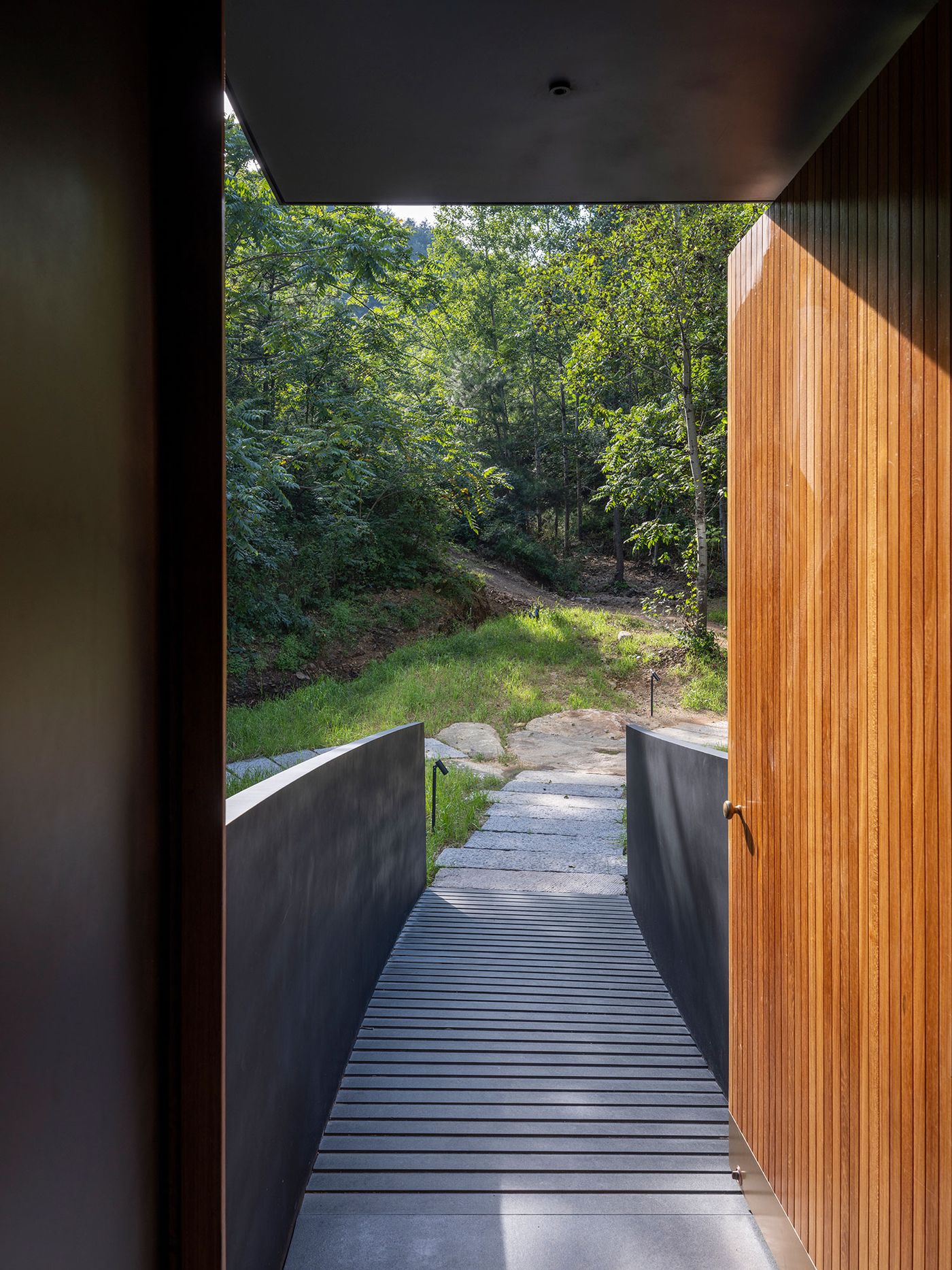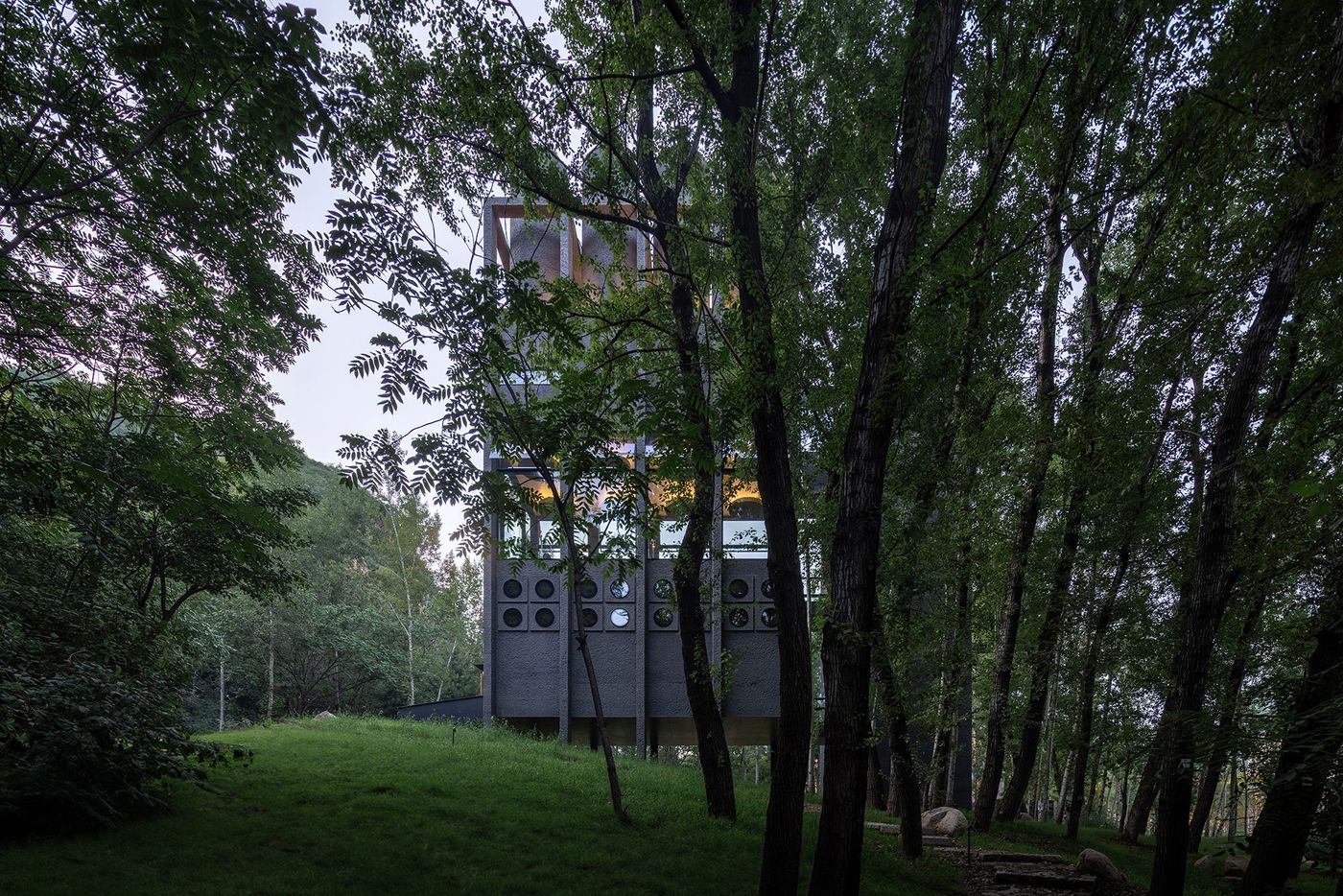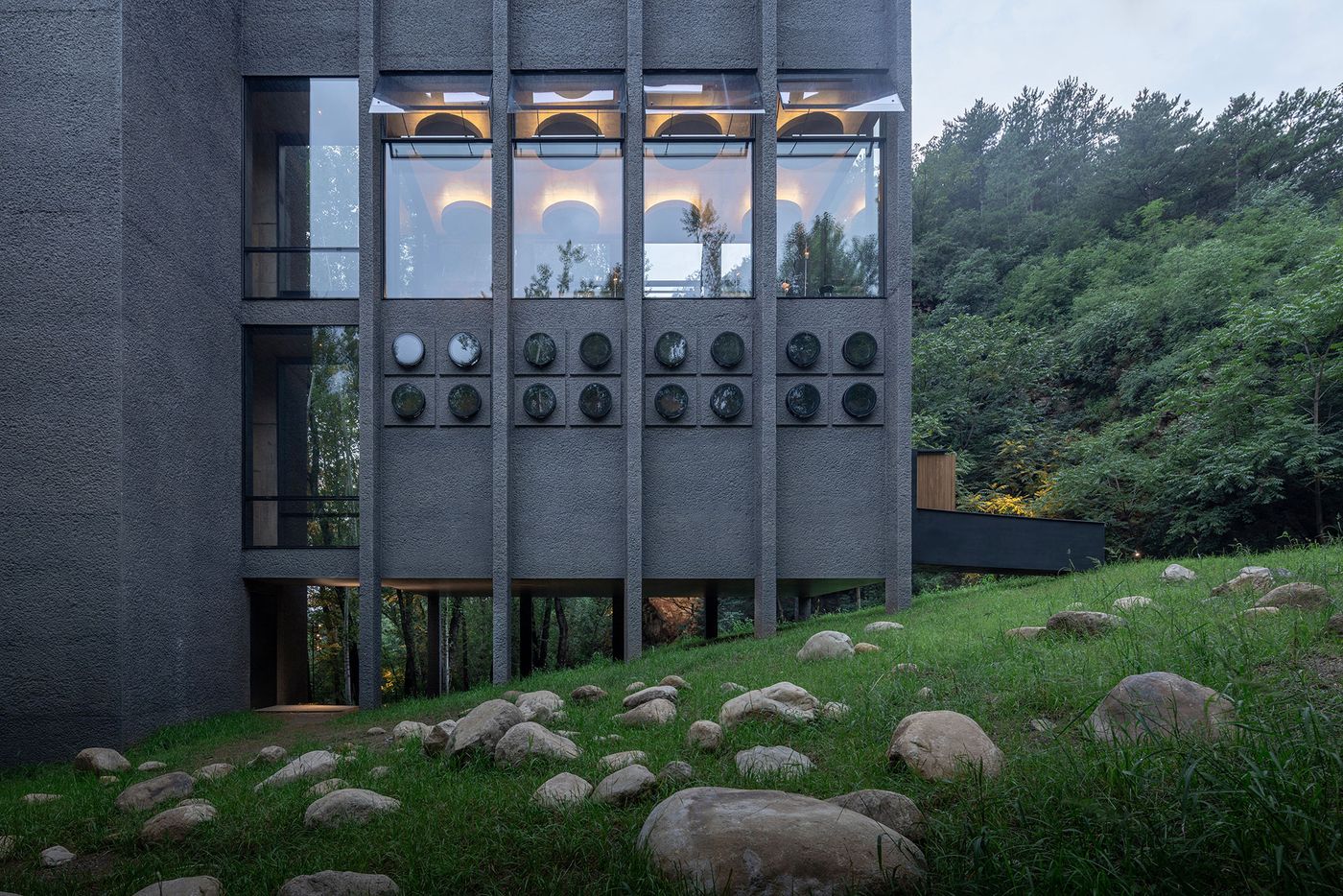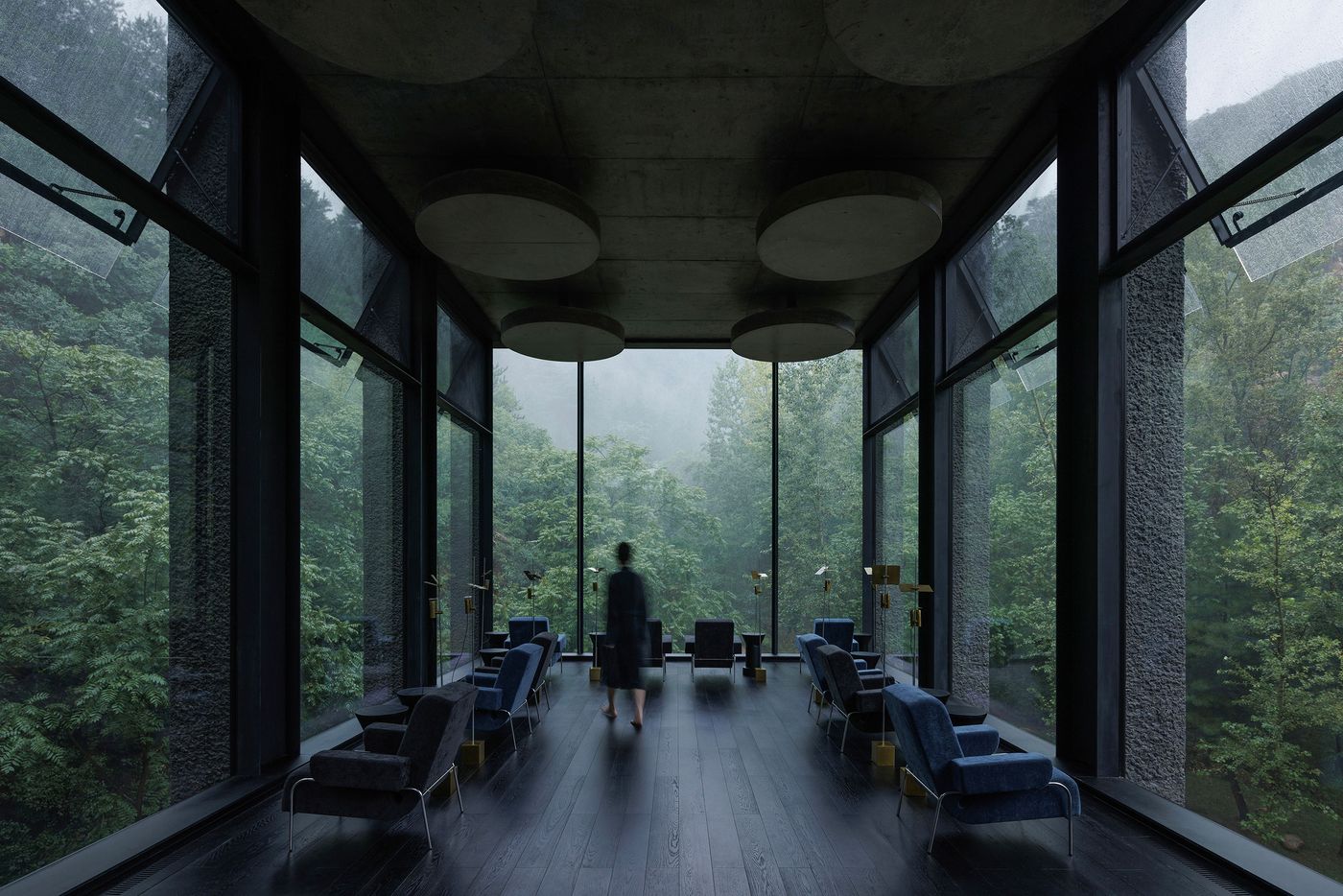
Wulingshan Eye Stone Spring: A Chinese Bathhouse Elevated Among the Trees
Words by Yatzer
Location
Hebei, China
Wulingshan Eye Stone Spring: A Chinese Bathhouse Elevated Among the Trees
Words by Yatzer
Hebei, China
Hebei, China
Location
Bathhouses can have the tendency to submerge guests in subterranean realms, but “Wulingshan Eye Stone Spring” flips the paradigm—nestled in the pine forests of Wuling Mountain in Hebei, China, to bathe here is to float not only in warm water but to do so amongst the trees. Designed by Beijing-based Vector Architects, the 560-square-metre bathhouse takes the form of a slender concrete tower housing a cluster of pools on its top level. Conceived as a sanctuary for an emerging residential community now taking shape nearby, the project poetically blends immersion in nature with a heightened architectural experience.
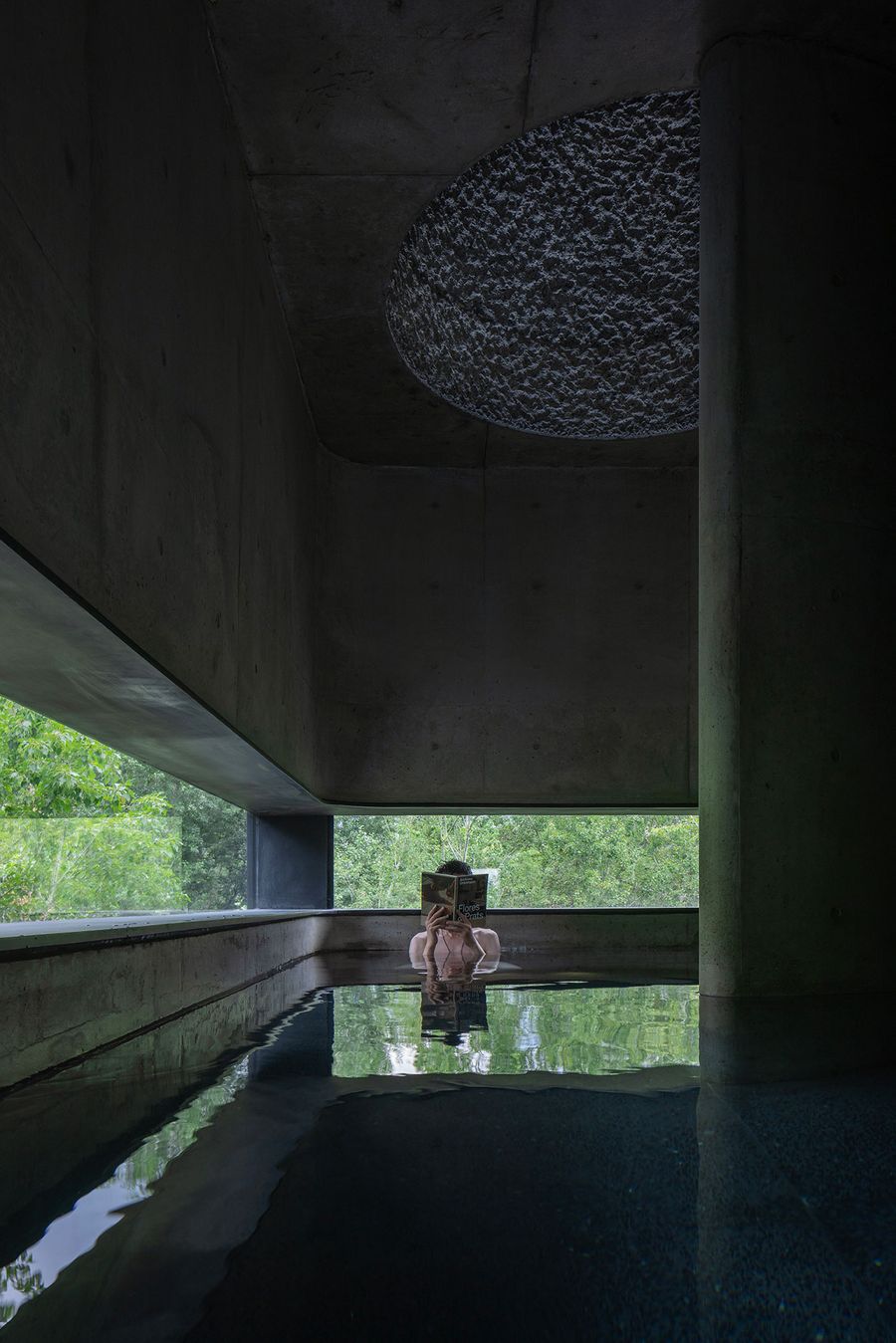
Photography by Liu Guowei.

Photography by Liu Guowei.
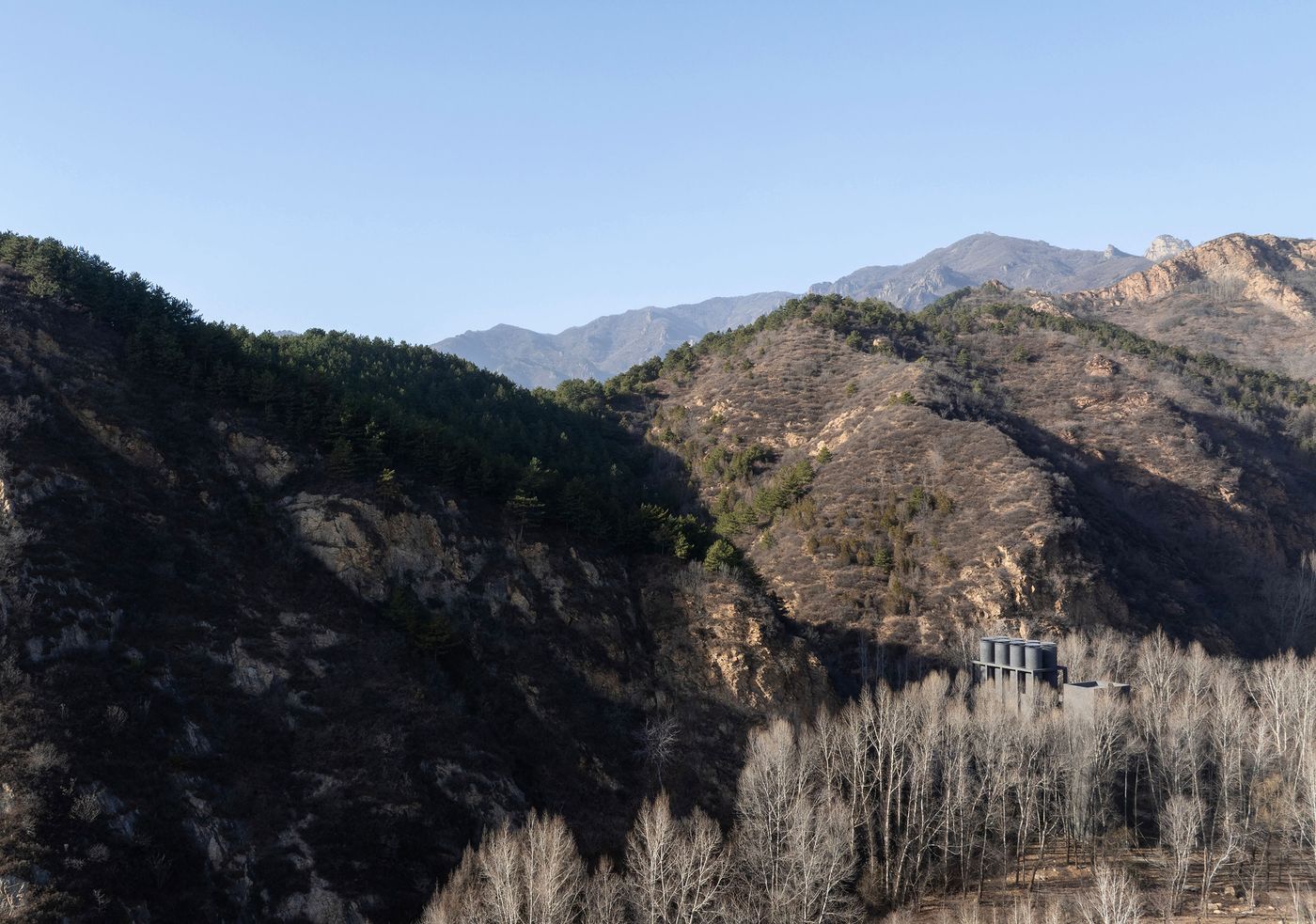
Photography by Liu Guowei.
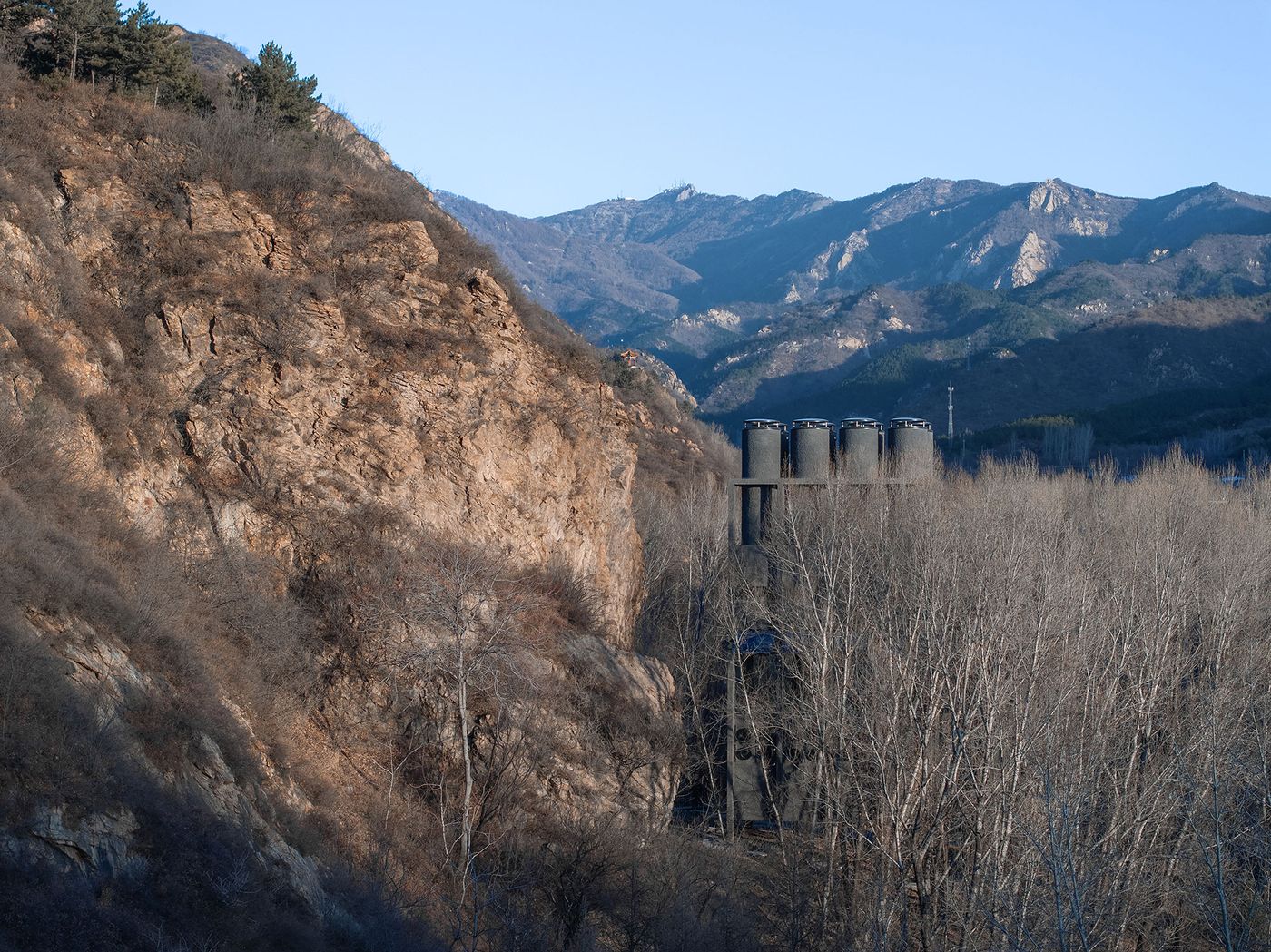
Photography by Liu Guowei.
The site, a steep river valley hemmed in by rocky cliffs and dense poplar groves, offered little in the way of flat ground but abundant inspiration. Rather than sprawling outward, the architects compressed the program into a slender vertical structure, lifting it off the forest floor with a grid of concrete columns. This gesture not only treads lightly on the land, avoiding the flood-prone lower grounds, but also offers guests elevated views across the treetops and the distant plains. A separate service core—an even slimmer companion that discreetly houses circulation and utilities—keeps the main bathing spaces free from any visual or functional clutter.
Materially and formally, the building strikes a balance between robustness and restraint. Its bush-hammered concrete façade, treated with a dark-toned coating, echoes the texture and hue of the surrounding rock faces, allowing the structure to recede into its environment despite its bold silhouette. Punctuated by playful porthole windows and crowned with a stack of cylindrical, chimney-like lightwells—the former resembling tree hollows, the latter echoing the soaring poplar—the volume feels at once archaic and faintly futuristic, like a sophisticated survival contraption from a forgotten civilization.
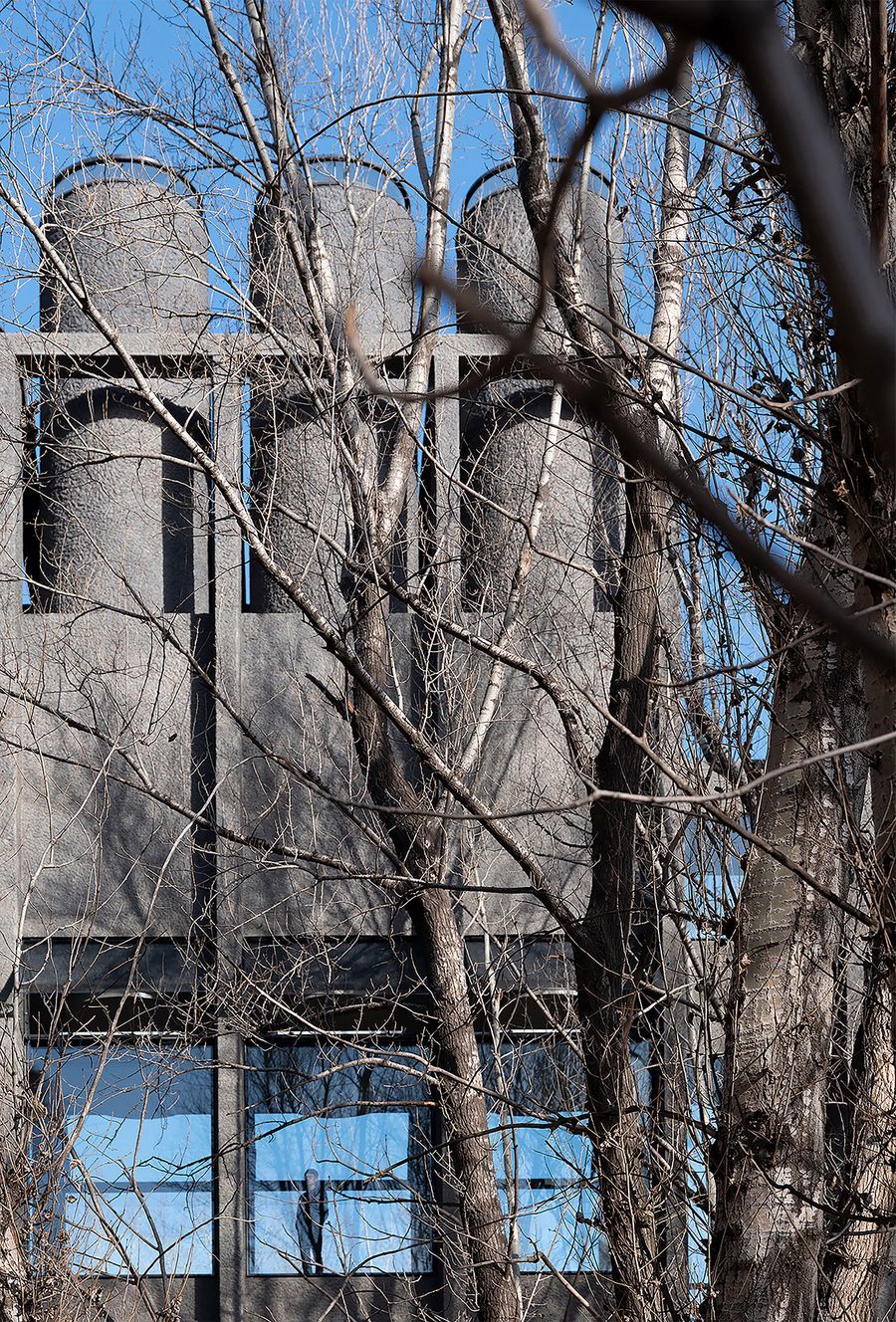
Photography by Liu Guowei.
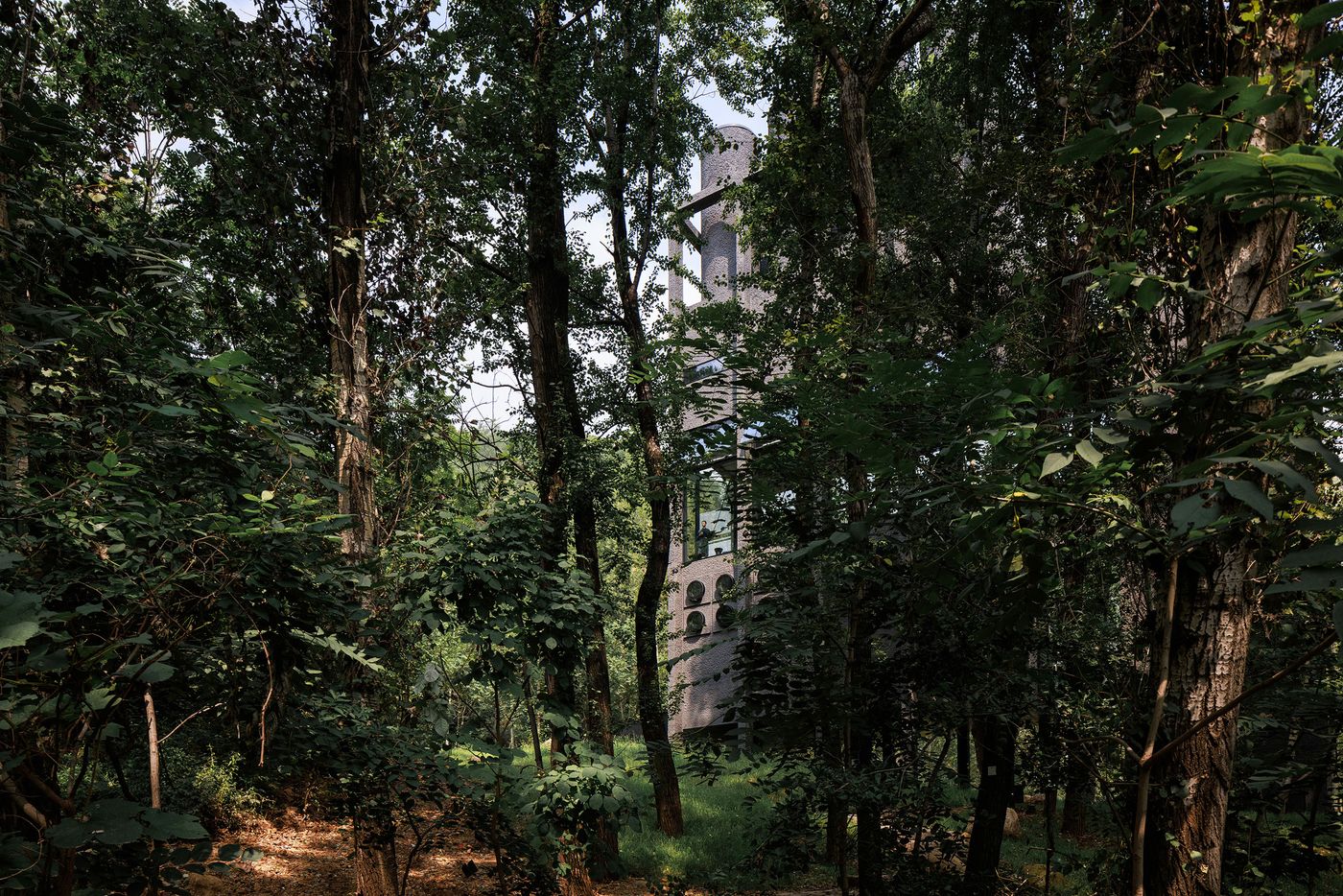
Photography by Liu Guowei.
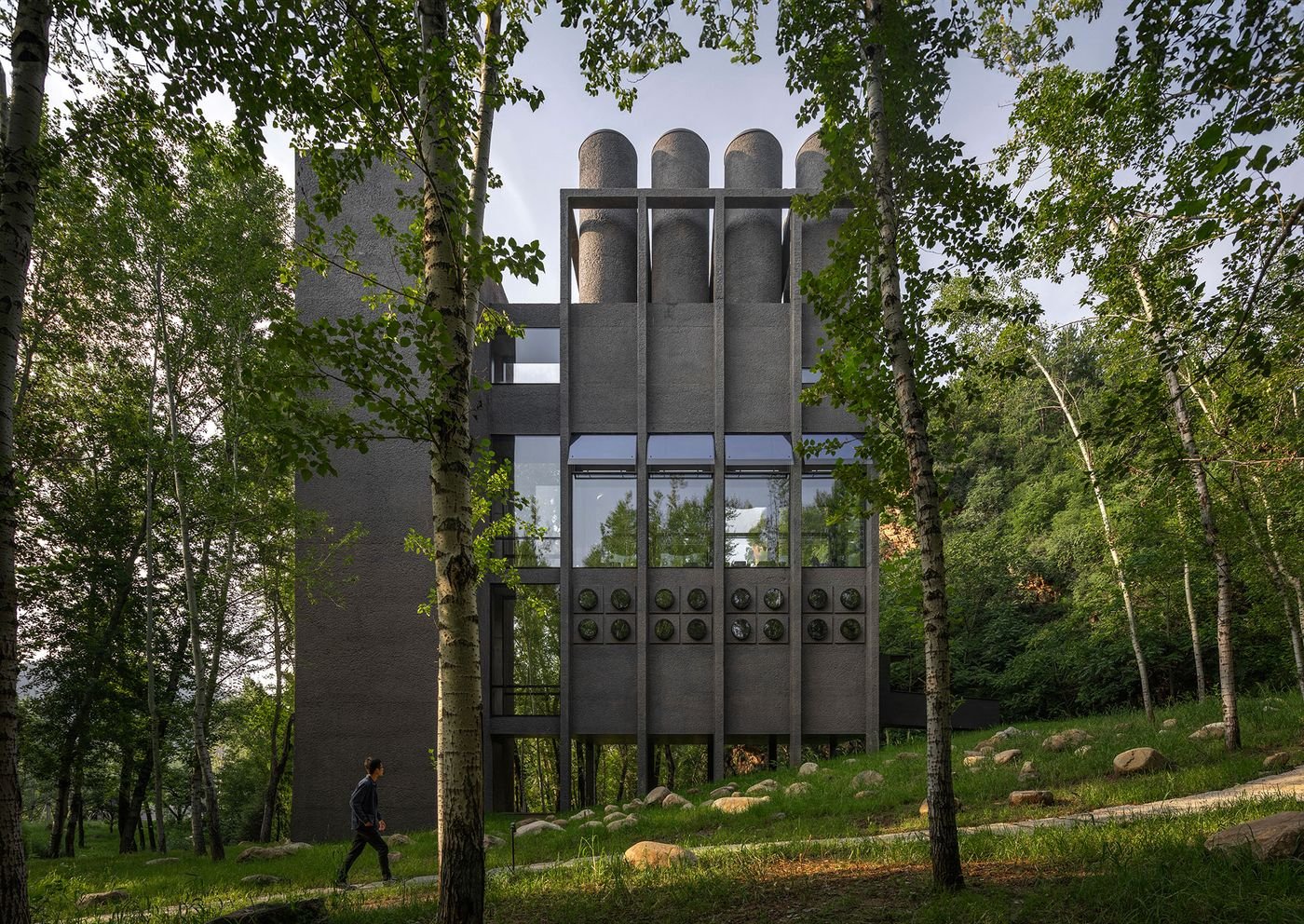
Photography by Liu Guowei.
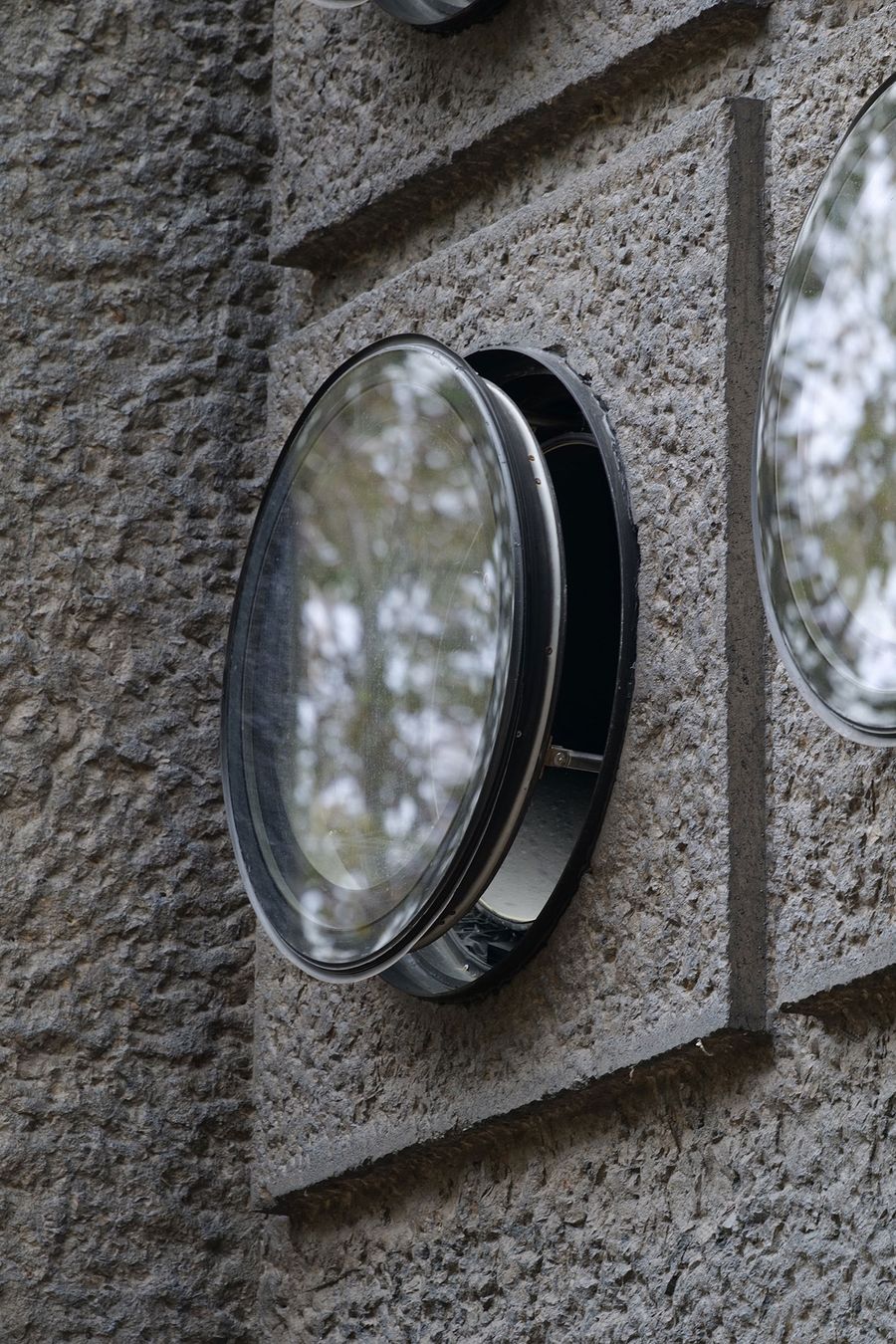
Photography by Liu Guowei.
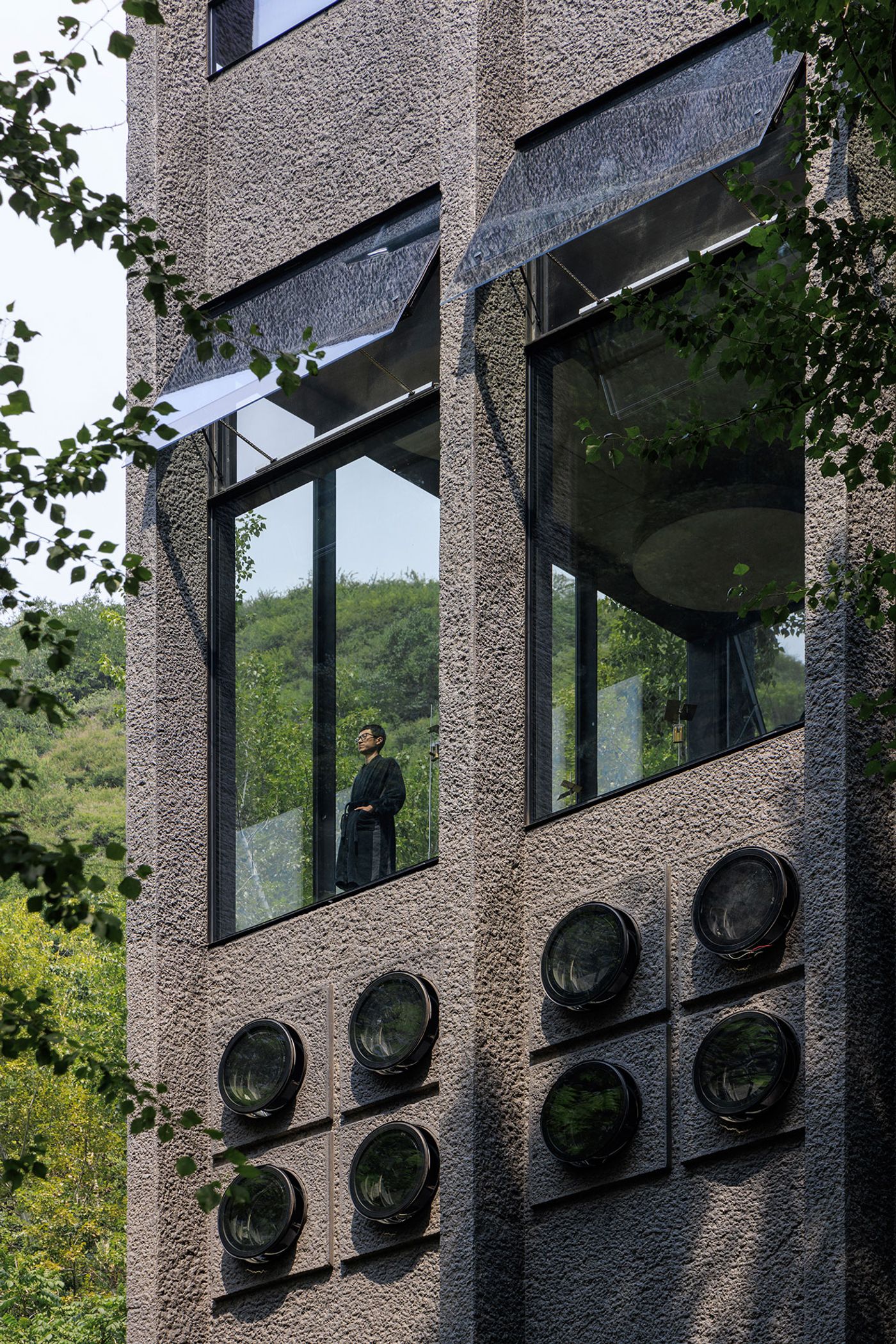
Photography by Liu Guowei.
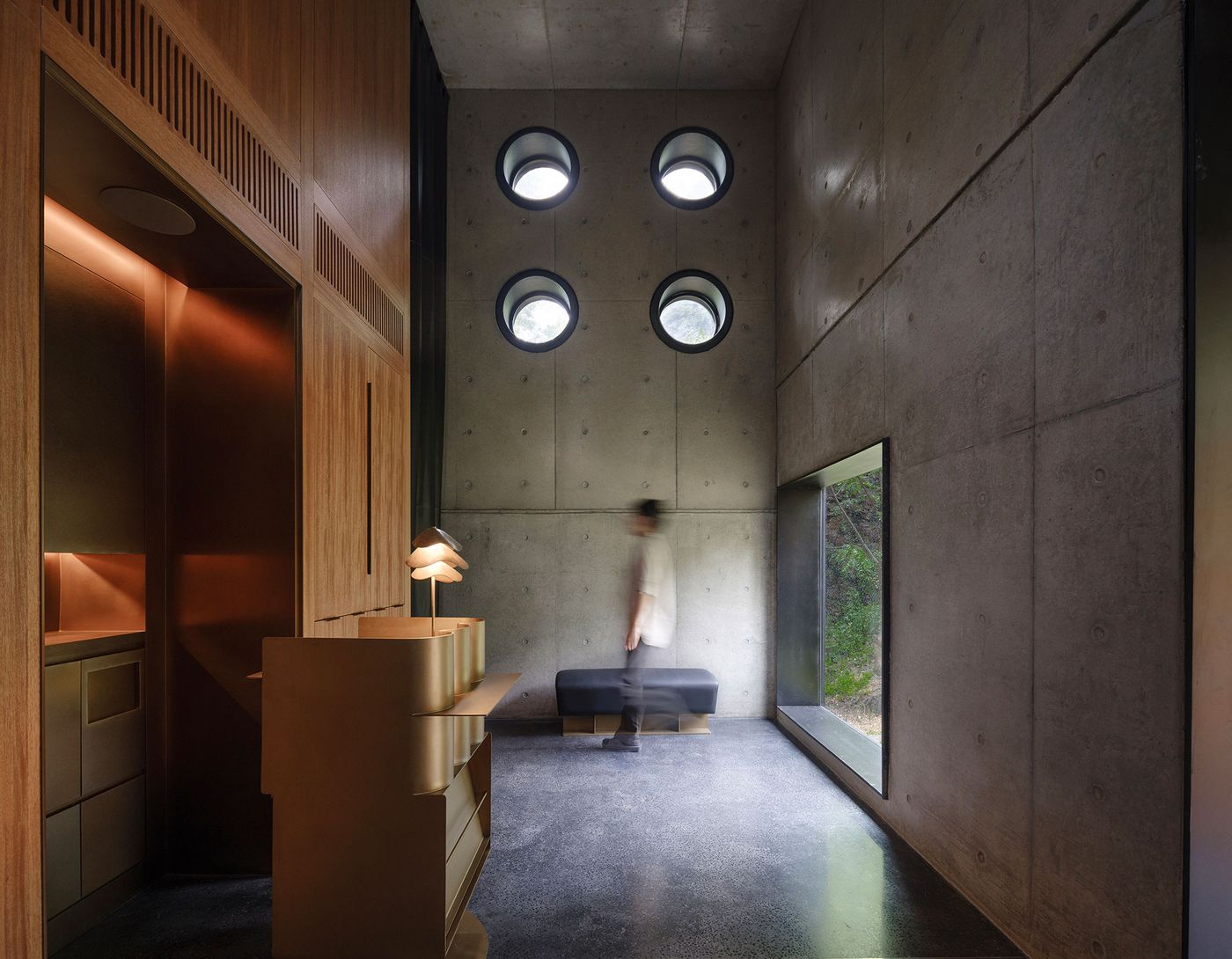
Photography by Liu Guowei.
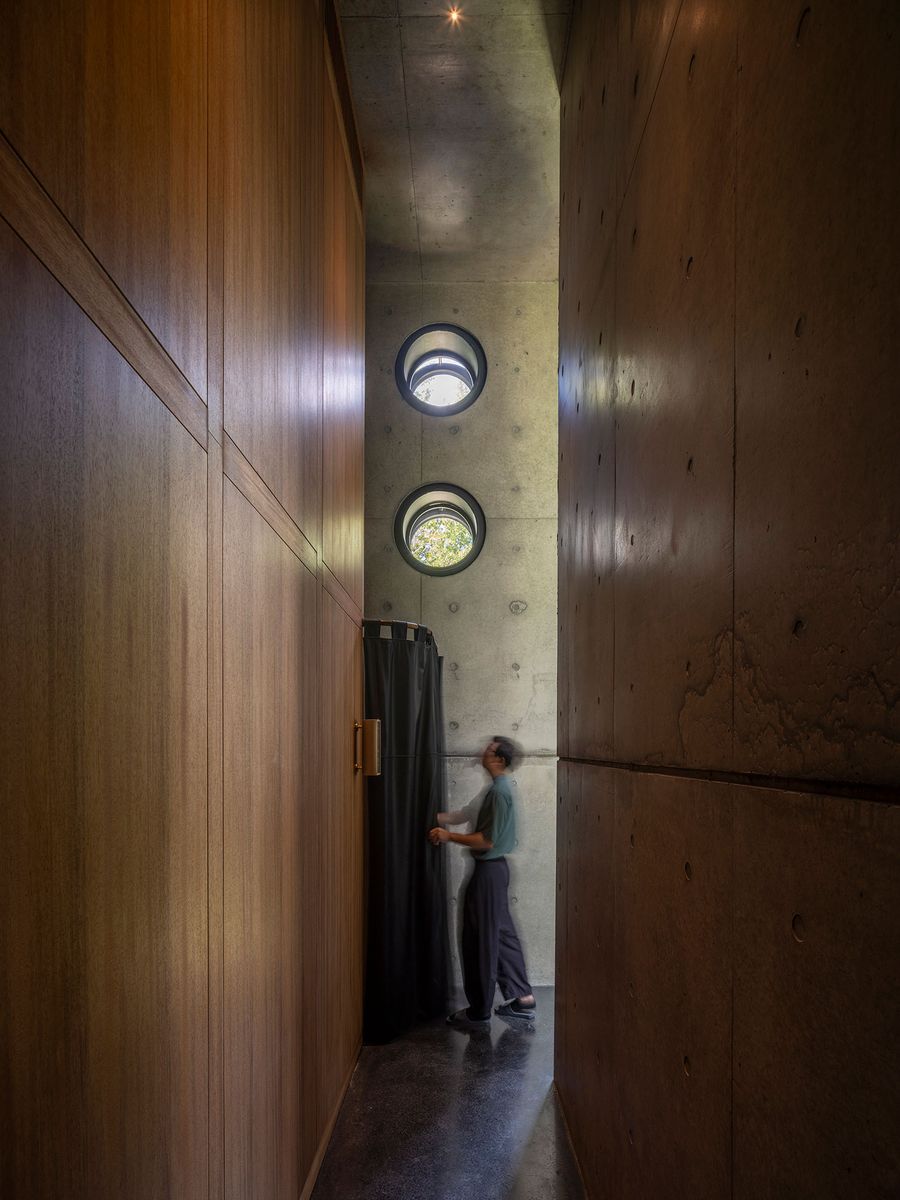
Photography by Tian Fangfang.
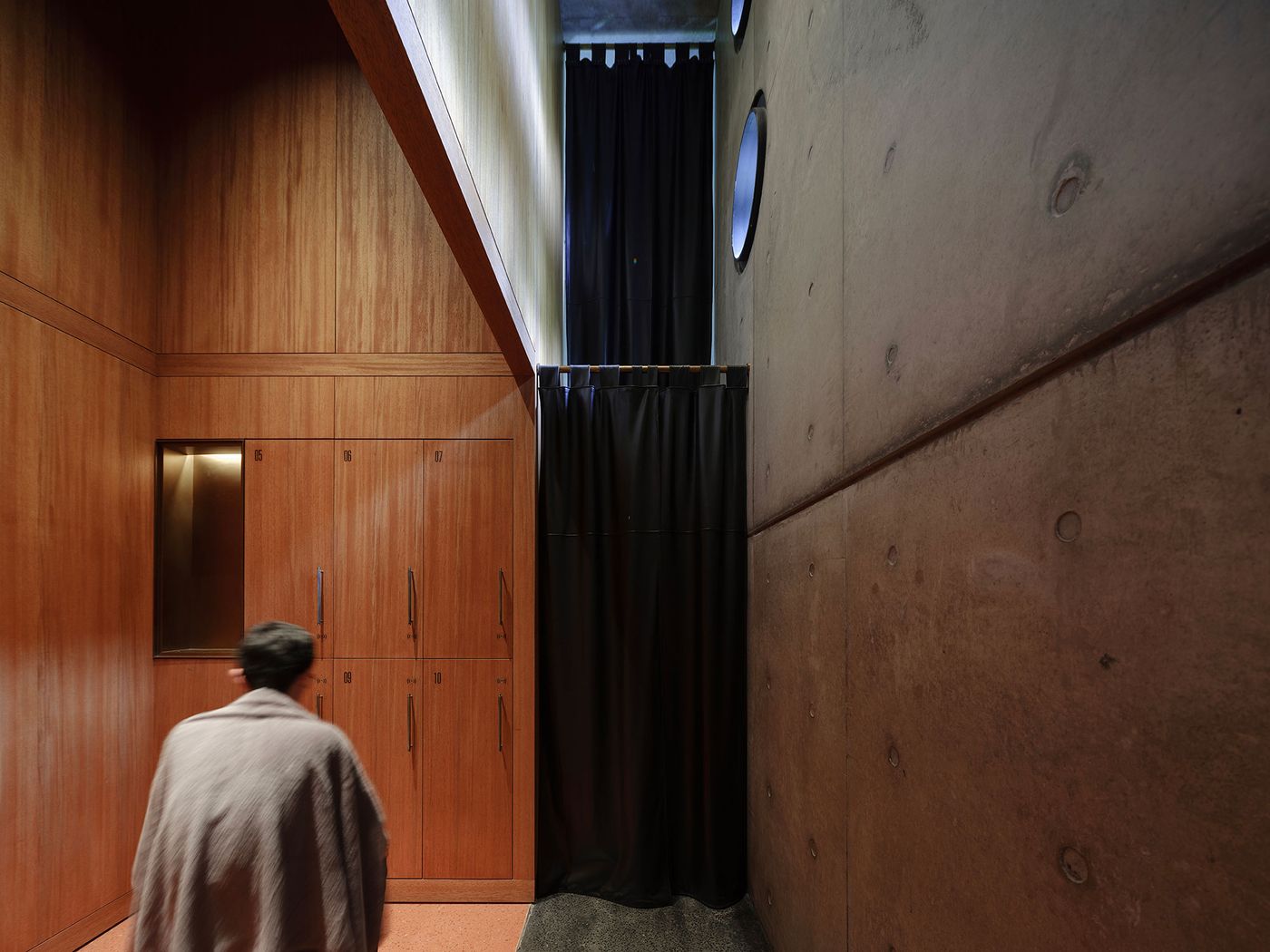
Photography by Liu Guowei.
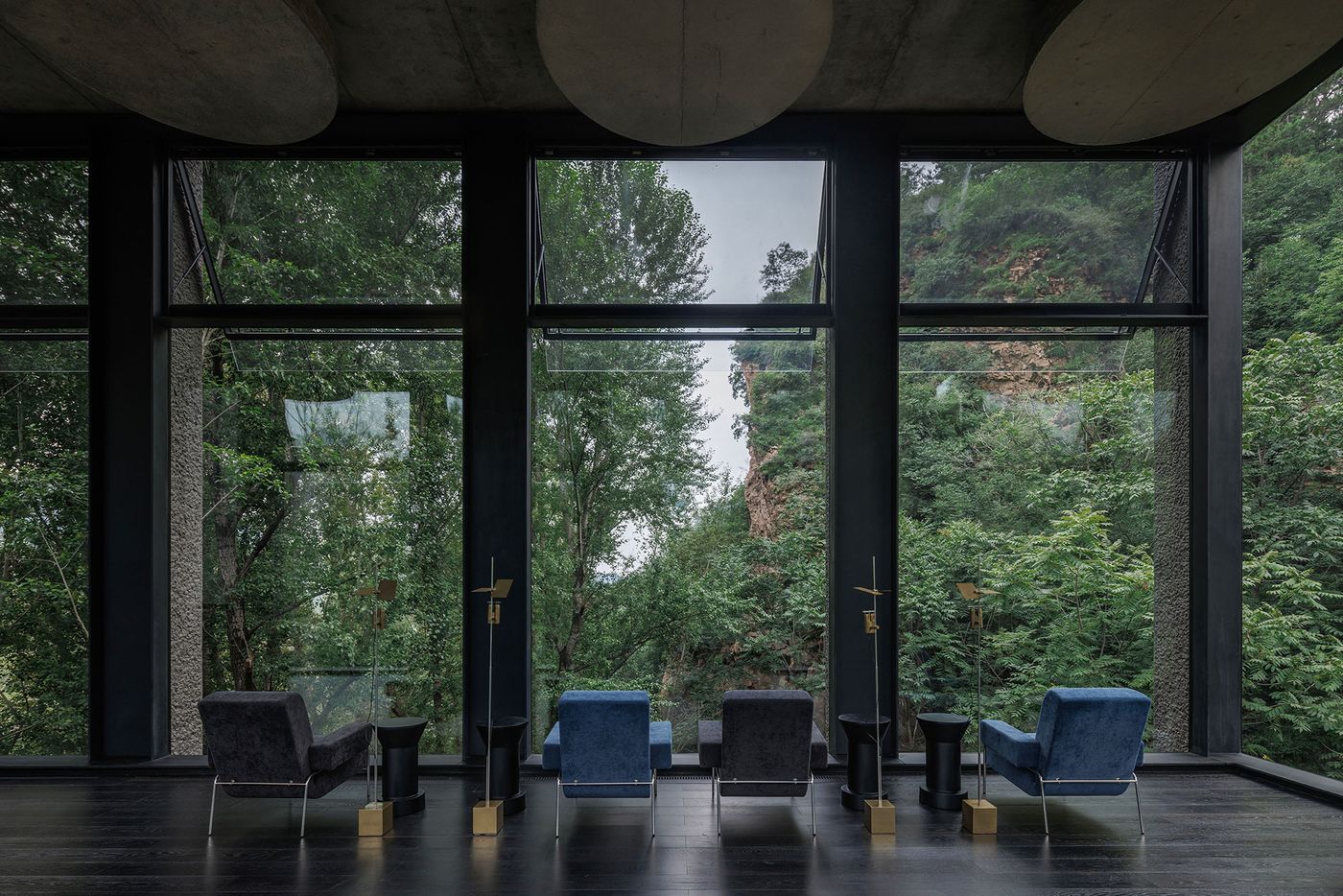
Photography by Liu Guowei.
Inside, the experience unfolds vertically. The ground floor, shaded by the forest canopy, accommodates the reception—a space that benefits from the intimate, subdued lighting filtering through the trees. Anchoring this level, a central core lined in warm teak houses the locker rooms and showers, its tactile richness counterbalancing the rawness of the concrete shell.
The first floor opens dramatically into a lounge framed entirely in glass. Here, perched among the upper reaches of the poplar canopy, the outside world seeps in—leaves brushing the windows, breezes lifting through operable glass panels—blurring the line between interior retreat and forest immersion.

Photography by Liu Guowei.
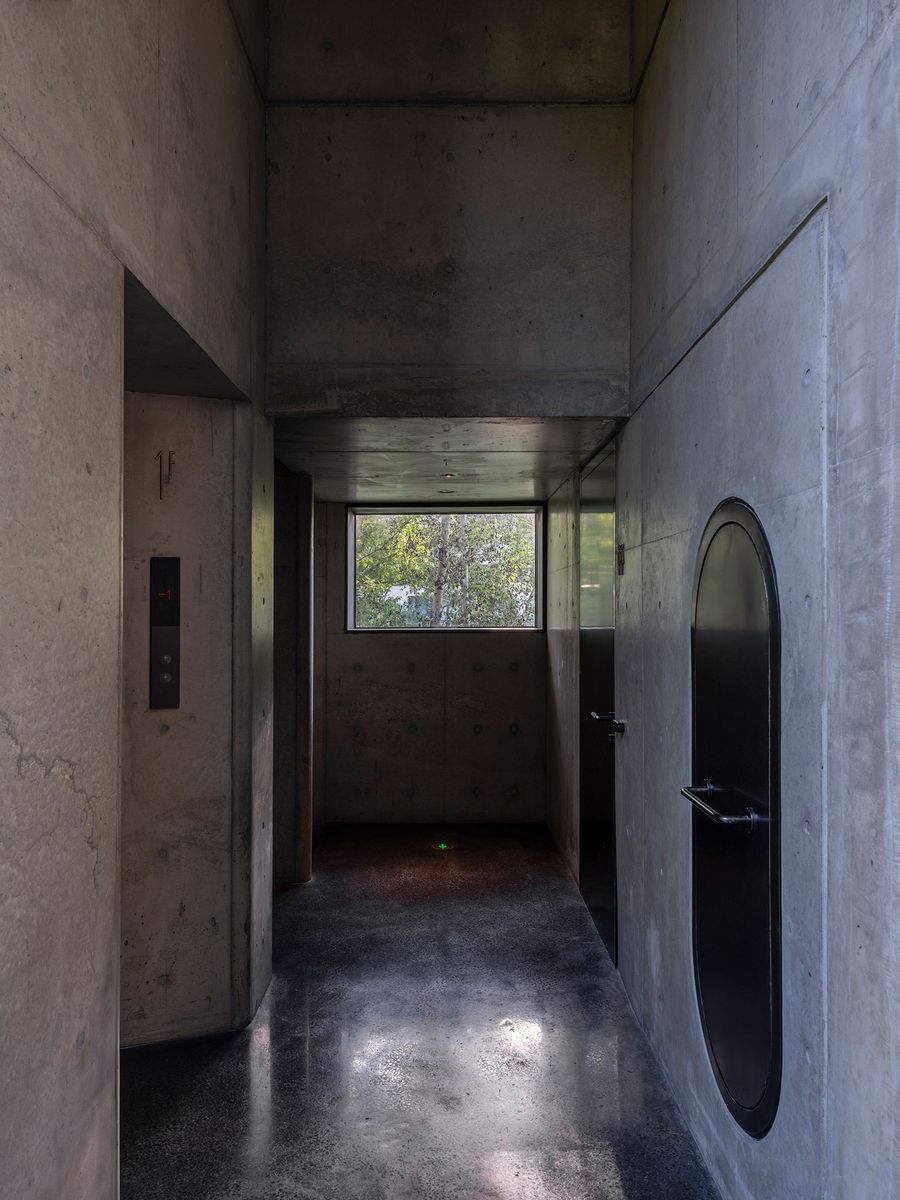
Photography by Tian Fangfang.
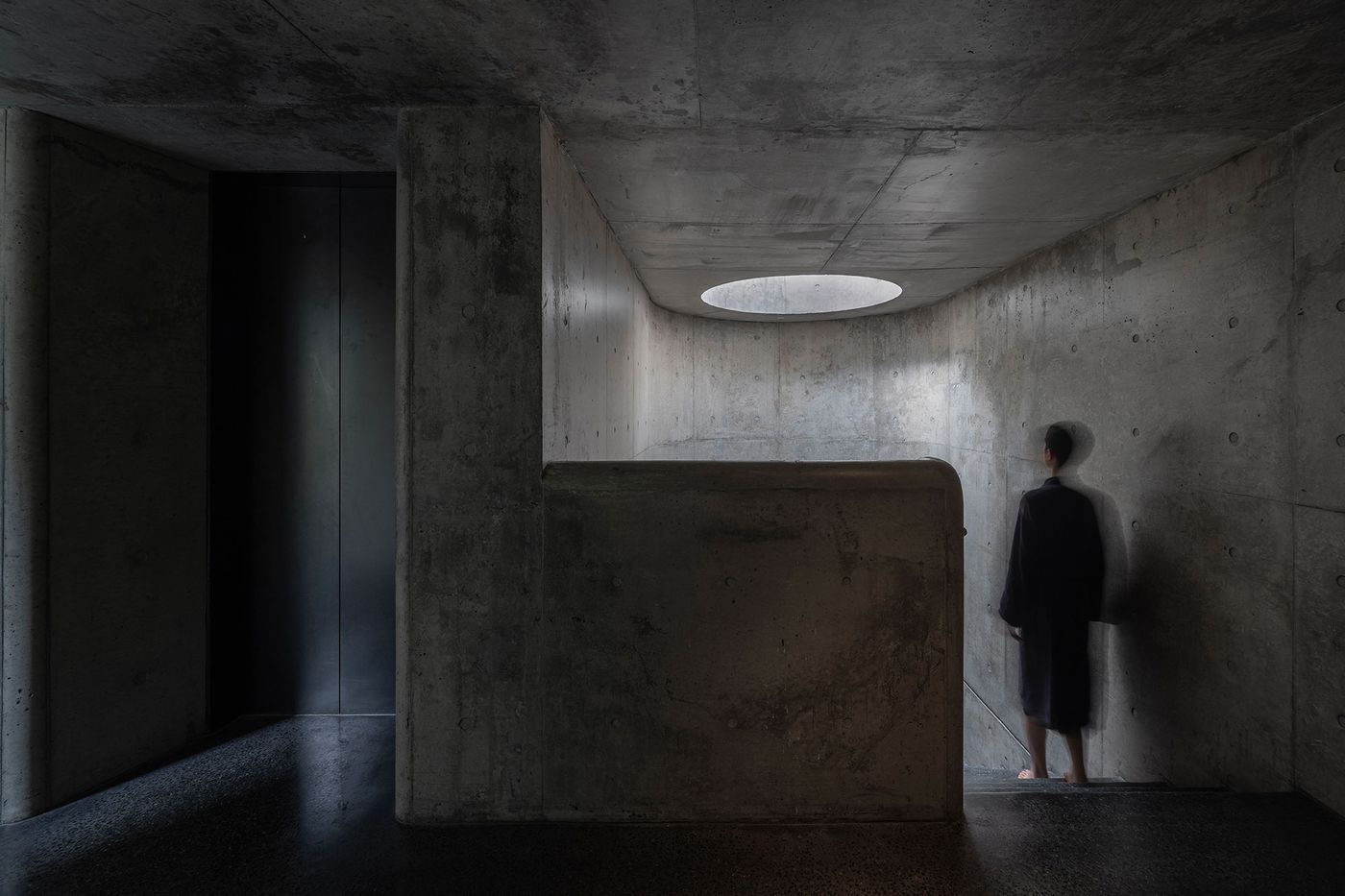
Photography by Liu Guowei.

Photography by Tian Fangfang.
But it’s on the second floor that the building’s quiet drama reaches its crescendo. Here, a series of pools of varying temperatures, discreetly delineated by curved concrete walls, lie beneath a grid of towering lightwells. Rendered in rough concrete, the eight-metre-high wells softly funnel daylight down across the water, animating the surfaces with shifting, dappled reflections. Narrow strip windows just above the waterline offer bathers dreamy glimpses of rock cliffs and rustling treetops, deepening the sense of suspension and reverie.
Rather than retreating underground, the bathhouse that Vector Architects designed elevates the ritual of bathing into a kind of slow-motion ascent—a gentle immersion not only into water but up into the air, light, and surrounding forest.
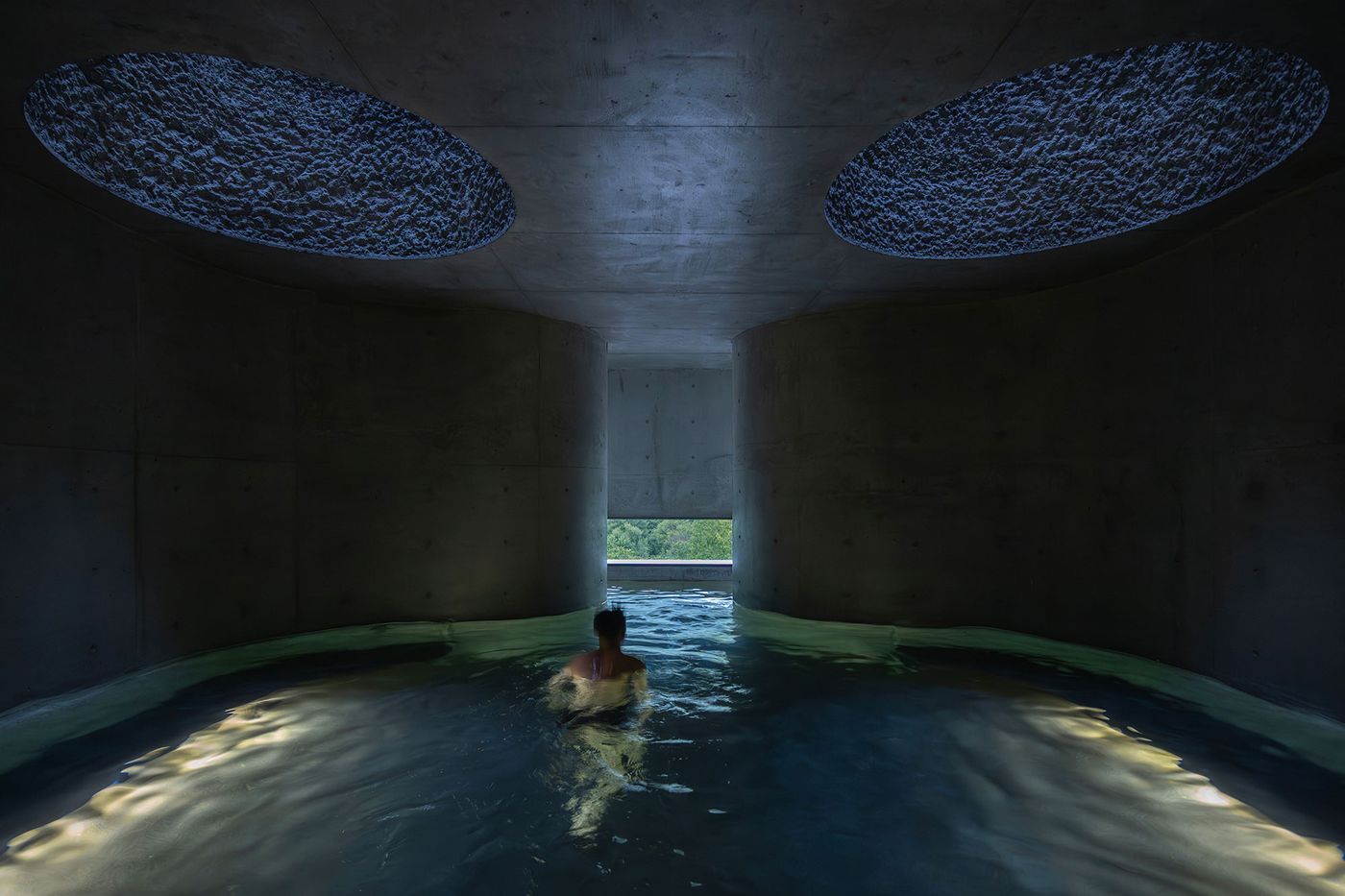
Photography by Liu Guowei.
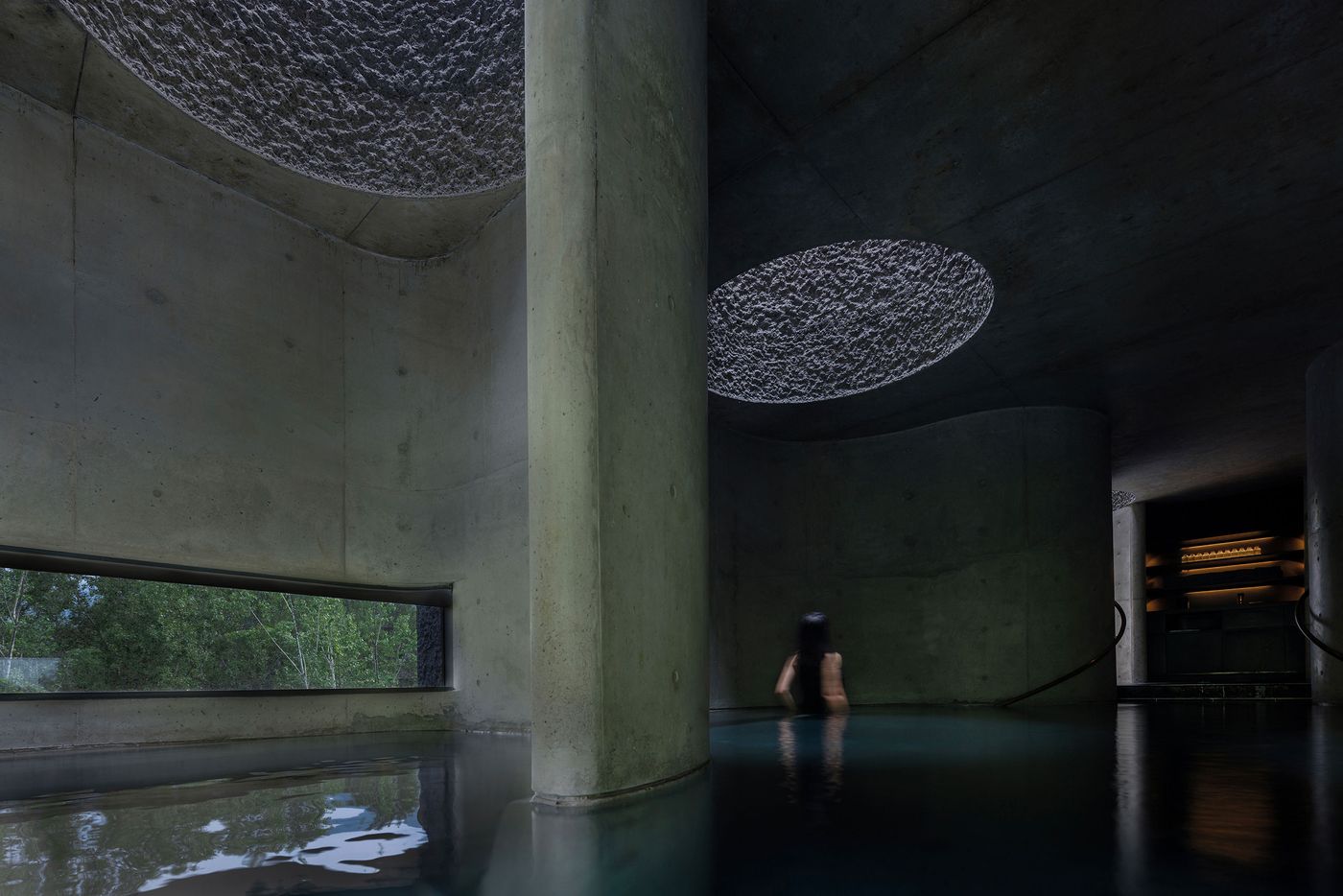
Photography by Liu Guowei.
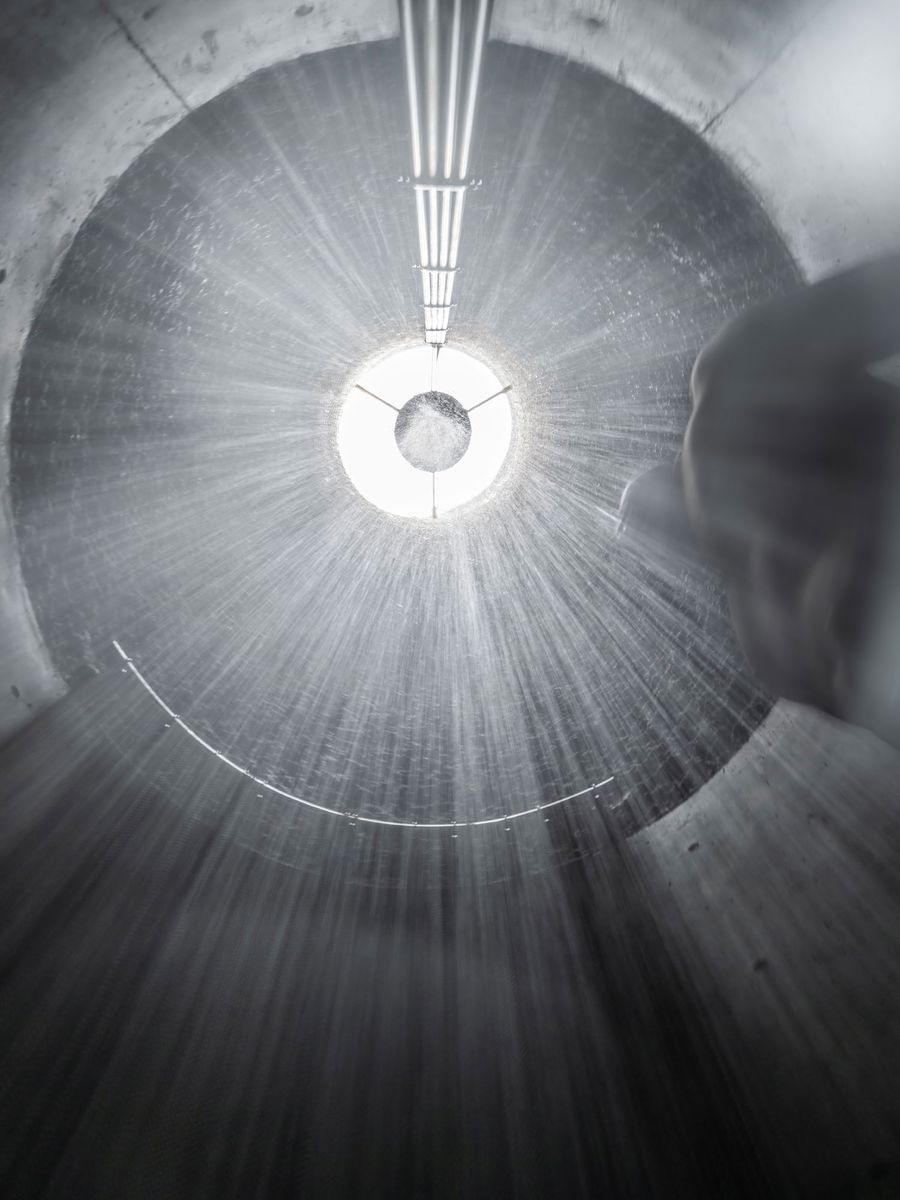
Photography by Liu Guowei.
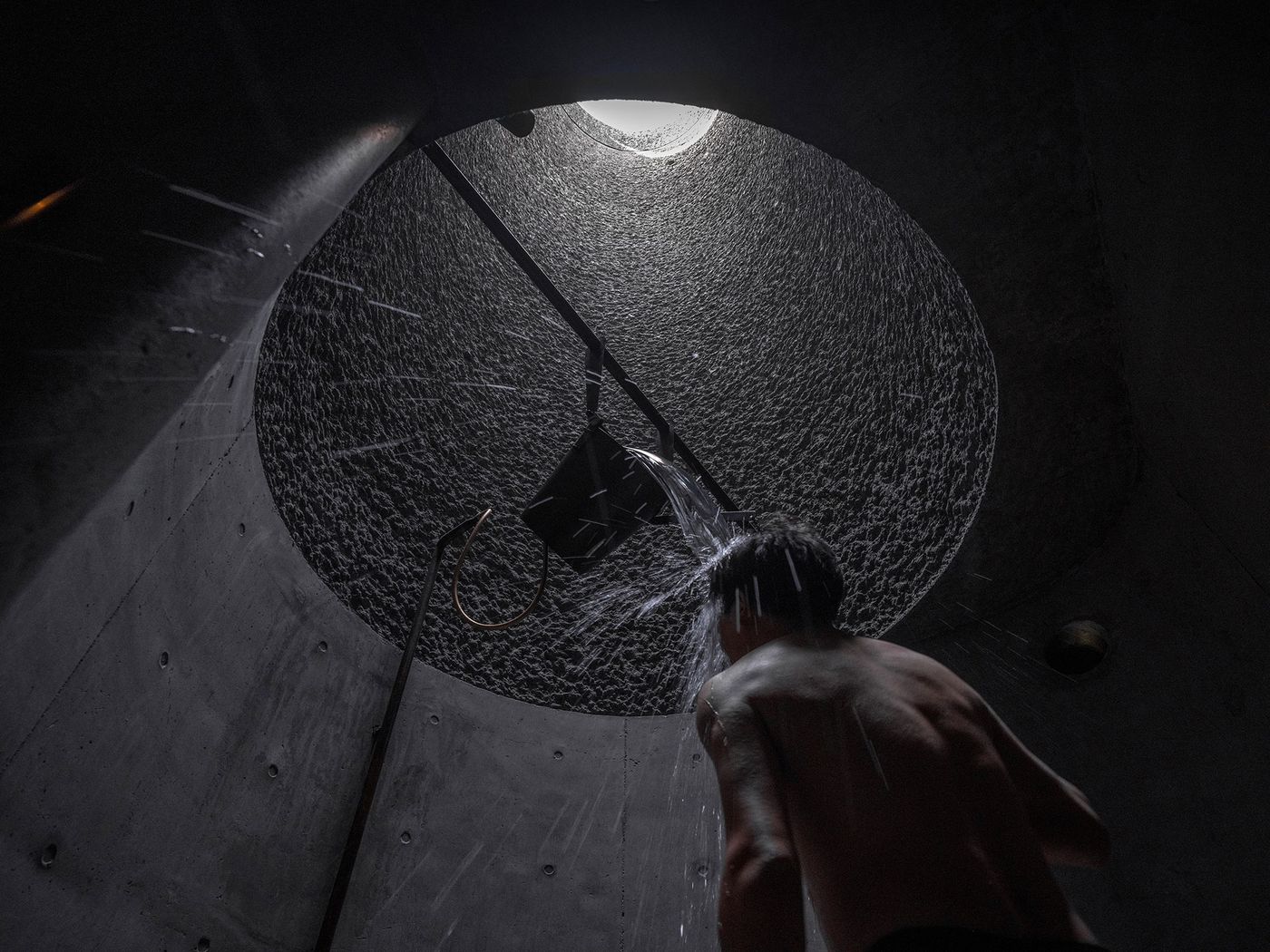
Photography by Tian Fangfang.
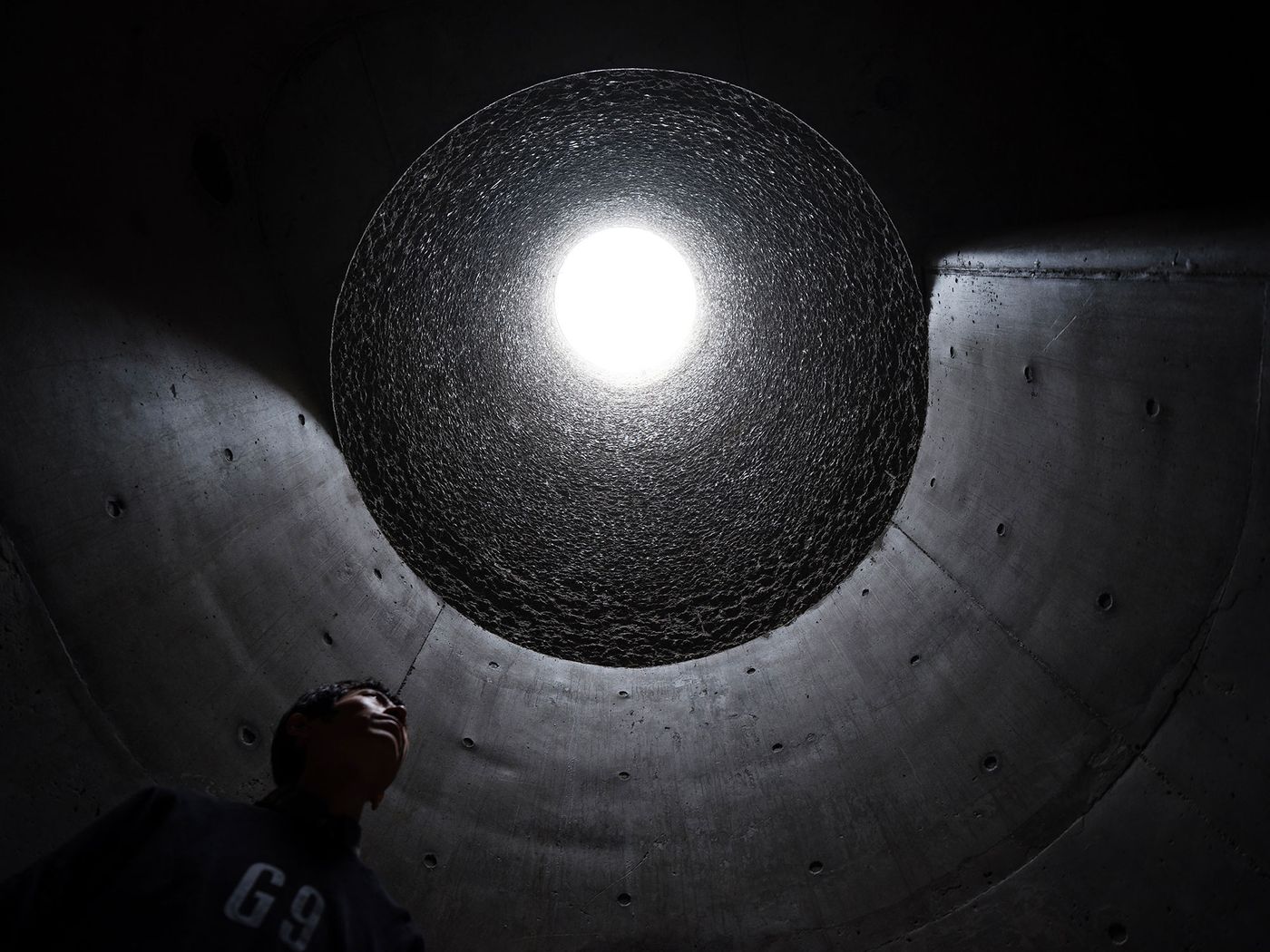
Photography by Liu Guowei.
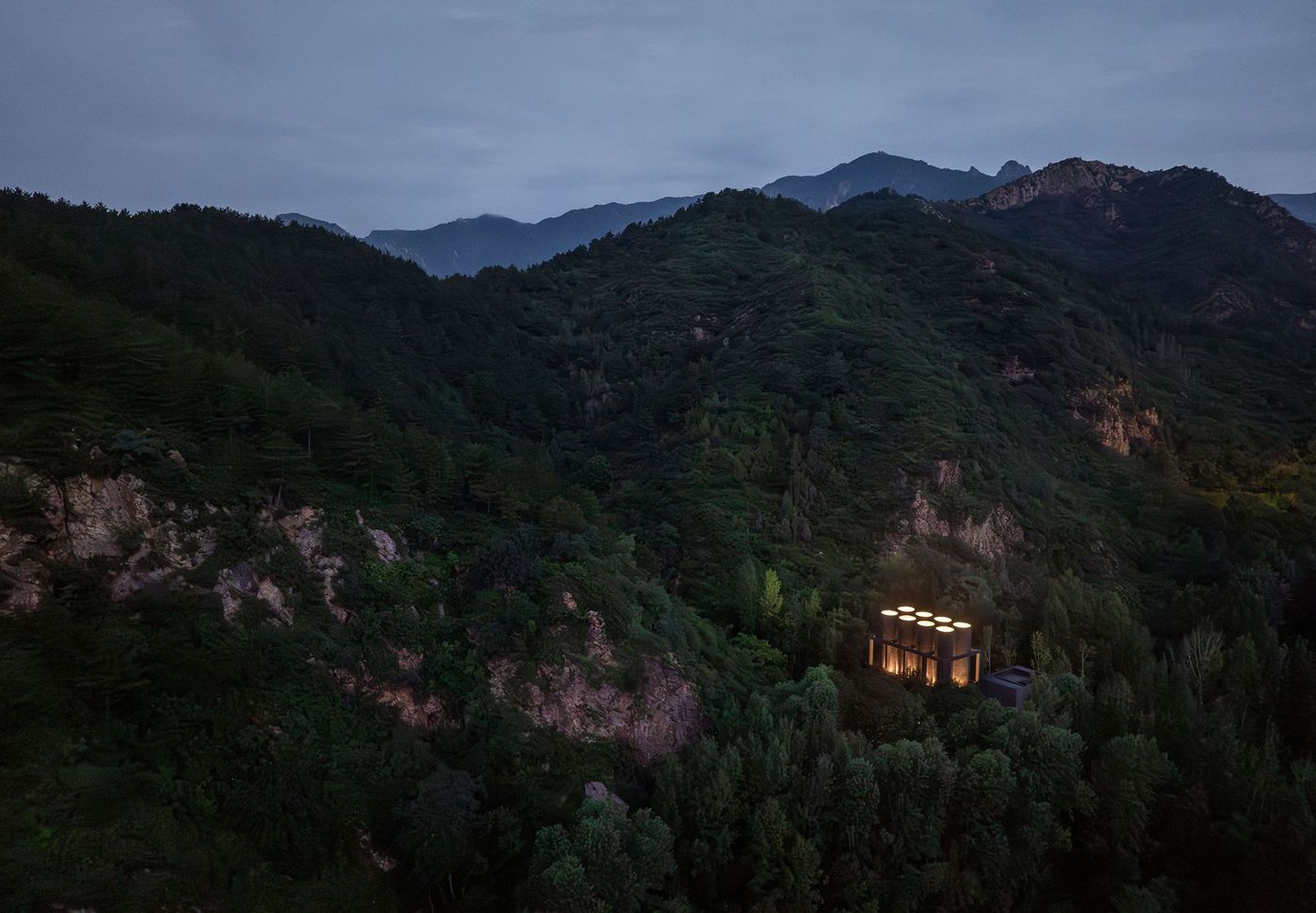
Photography by Liu Guowei.
